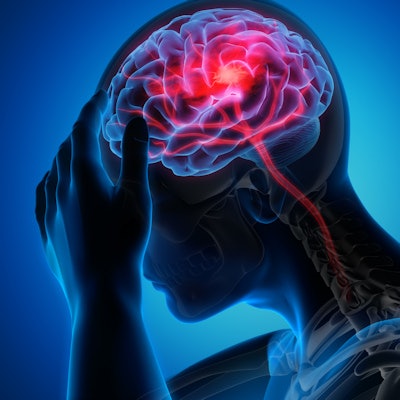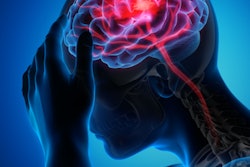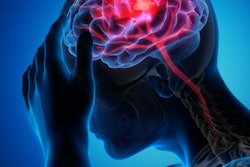
A CT-based measure for stroke assessment can help clinicians evaluate the scope of damage and determine whether the patient will benefit from endovascular treatment, according to a study published October 10 in JAMA Neurology.
The measure, called the Alberta Stroke Program Early Computed Tomography Score (ASPECTS), is a 10-point system that evaluates the extent of the stroke using data from a baseline noncontrast CT scan; scores under 5 indicate a larger infarct area.
It's long been assumed that using endovascular treatment in stroke patients with ASPECTS grades lower than 5 may not be safe, wrote a team led by Dr. Kazutaka Uchida, PhD, of Hyogo Medical University in Nishinomiya, Japan.
"Patients with large infarctions (ASPECTS 5 or less) have generally been excluded from clinical
trials investigating endovascular therapy or are represented in only small numbers, partly because of concerns that bleeding might occur in the area of infarction after reperfusion and patients might be unable to regain functional independence," the group noted.
Endovascular therapy (EVT) helps protect a person's functional disability after acute stroke caused by large vessel occlusion and is usually performed within six to eight hours after the stroke occurs. Uchida and colleagues sought to investigate the range of ASPECTS ratings for which endovascular therapy would be effective using data from the Recovery by Endovascular Salvage for Cerebral Ultra-acute Embolism - Japan Large Ischemic Core Trial (RESCUE-Japan LIMIT).
The trial was conducted between November 2018 and December 2021 at 45 stroke centers across Japan and included 202 acute ischemic stroke patients who were randomly assigned to undergo EVT with medication or to receive medication alone.
The researchers assessed patient outcomes at 90 days post stroke using a six-point disability evaluation tool called the modified Rankin scale (with 0 equal to no residual symptoms; 1 equal to no significant disability; 2 equal to slight disability; 3 equal to moderate disability; 4 equal to moderately severe disability; 5 equal to severe disability that requires constant care; and 6 equal to death).
Of the study participants, 52% had ASPECTS grades of 3 or lower at a 90-day poststroke assessment. Of these, 21.4% in the group that underwent endovascular therapy had a disability score of 0 to 3 at 90 days post stroke. EVT was more than twice as effective in patients with ASPECTS ratings of 4 to 5: Of these patients, 43.2% had modified Rankin scale score of 0 to 3 at 90 days post stroke.
Of concern for those patients with ASPECTS ratings of 3 or 4, the team found that the risk of intracranial hemorrhage prompted by EVT was higher, with an odds ratio of 4.14 (reference, 1) compared with 1.84 in those patients with low ASPECTS ratings who did not undergo EVT.
The study results shed light on how ASPECTS grades relate to the use of EVT in patients suffering from acute stroke, according to Uchida and colleagues.
"The findings in this study indicate that EVT was not associated with improved functional outcomes at 90 days in patients with acute large ischemic stroke and ASPECTS 3 or less," they concluded. "Considering the lower likelihood of regaining functional independence and the higher incidence of symptomatic intracranial hemorrhage in patients with ASPECTS 3 or less, ASPECTS 3 should be further investigated as the threshold of indication for EVT."



















